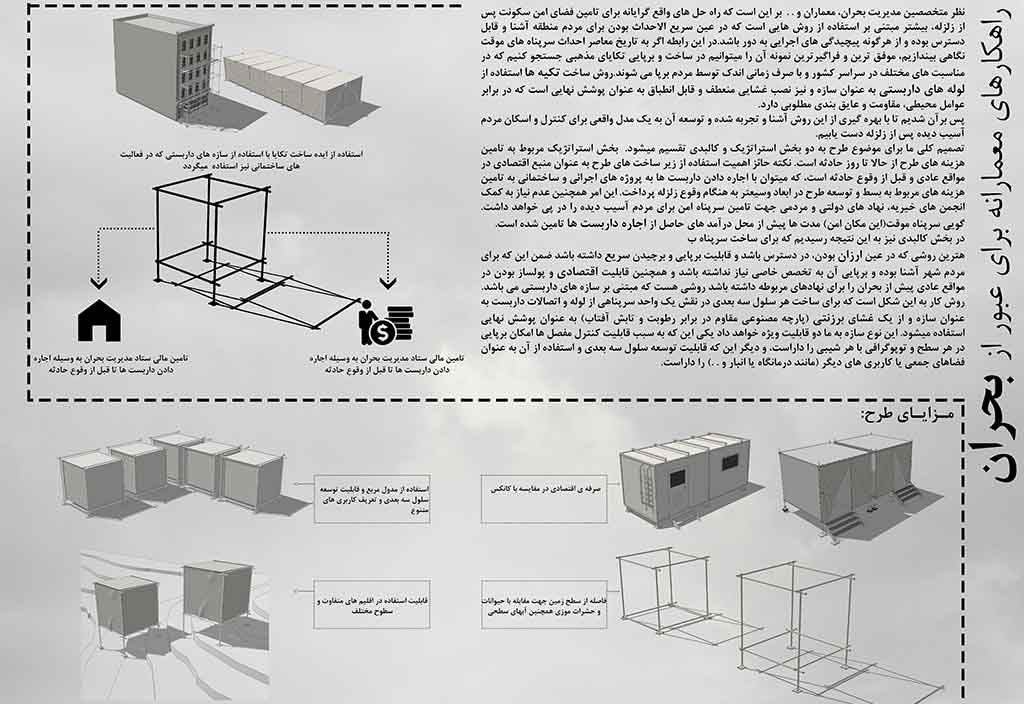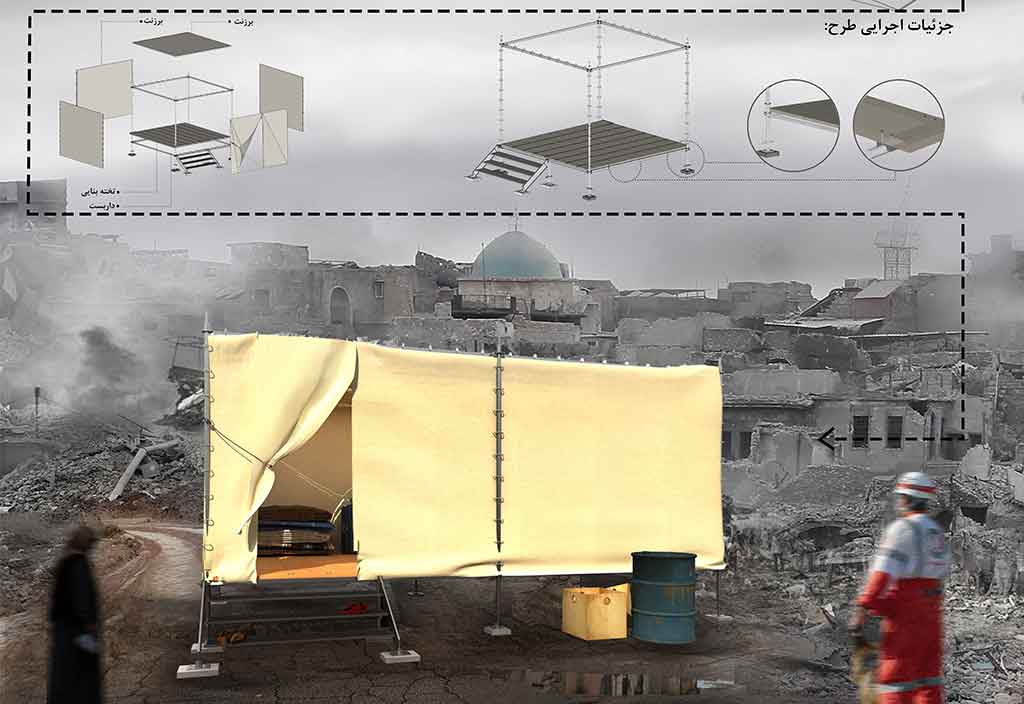



[1]ZISTA
Tehran | 2018
Architectural solutions to overcome the crisis:
The opinion of crisis management experts, architects, and related areas... is based on the fact that real solutions for providing a safe living space after an earthquake are primarily contingent upon the application of locally available and well-known techniques that are straightforward to erect and minimize any complexities associated with construction.
In this regard, the contemporary history of constructing temporary shelters, a significant and well-executed example is evident in the construction of "Religious-Tekye"[2] These structures are consistently erected by individuals nationwide for various occasions, and with minimal effort and time expenditure.
The construction technique of building Tekye is to use scaffolding pipes as a structure and install a flexible and adaptable membrane as the final cover, which boasts durability and thermal isolation capabilities against various environmental influences. So we decided to use this familiar and experienced method and develop it to achieve a real model for controlling and settling the affected people after the earthquake.
Our general decision for the subject of the project is divided into two strategic and physical parts. The strategic part is related to financing the project costs from now until the day of the accident. The important point is to use the infrastructure of the project as an economic source in normal times and before the accident, which can be used to finance the costs related to the expansion and development of the project on a larger scale by renting the scaffolding to executive and construction projects, Pay when the earthquake occurs. So that, there is no need for the help of charity associations, government, and public institutions to provide safe shelter for the affected people. It is as if the temporary shelter (this safe place) was provided long ago from the income from renting the scaffolding.
In the realm of physical considerations, it has been determined that an optimal shelter construction method should meet certain criteria: affordability, ease of accessibility, rapid assembly and disassembly, as well as being familiar to the local populace, and not requiring specialized knowledge or skills for implementation.
Furthermore, the implementation of scaffolding structures is deemed a pragmatic approach that affords economic benefits to relevant institutions in non-emergency circumstances.
The approach employed involves the utilization of pipes and scaffolding connections to construct a three-dimensional cell as a shelter unit. An impermeable and UV-resistant synthetic fabric membrane referred to as tarpaulin is subsequently implemented as the final covering. This particular form of architecture presents two distinct attributes. Firstly, due to the capacity to regulate the joints, it is possible to build on any level and topography, regardless of slope. Secondly, it enables the creation of a three-dimensional unit, which can serve as communal spaces or be repurposed for objectives such as healthcare facilities or storage repositories.
A venue for Muslim mourning rituals, especially mourning for Imam Hussein, which is held annually for 10 days and is usually constructed by people with light structures and textiles.
[1] "Zista" is derived from "Zistan" which means life-giving in Farsi.
[2] A venue for Muslim mourning rituals, especially mourning for Imam Hussein, which is held annually for 10 days and is usually constructed by people with light structures and textiles.
Type: Civic
Location: Tehran
Client: Eng Keykhah
Design Team: Hasht Architects
Construction: Hasht Architects
Date: 2018